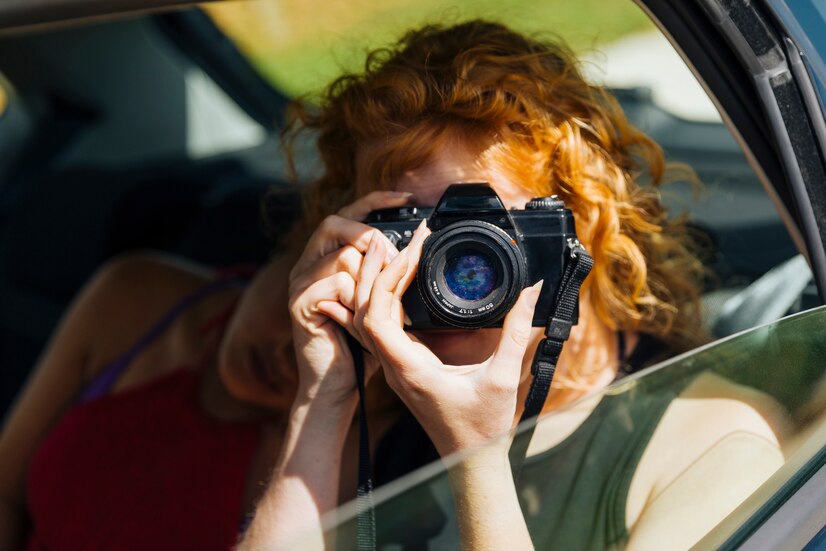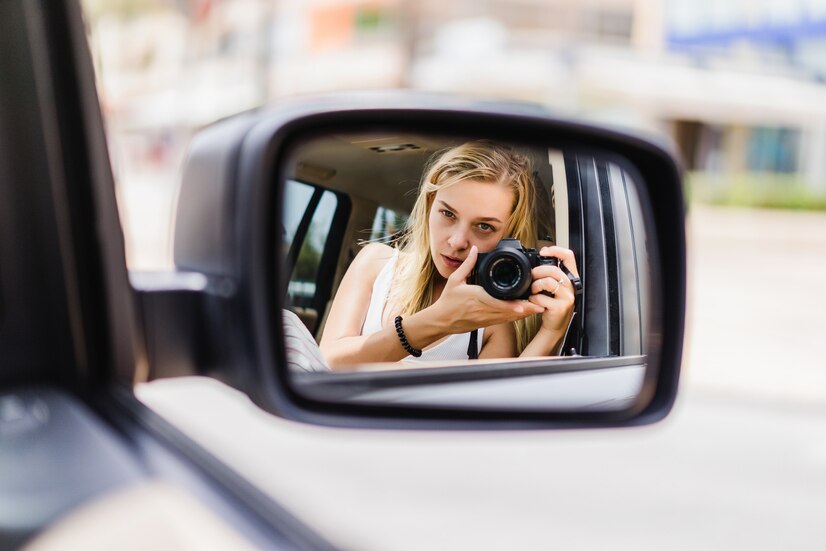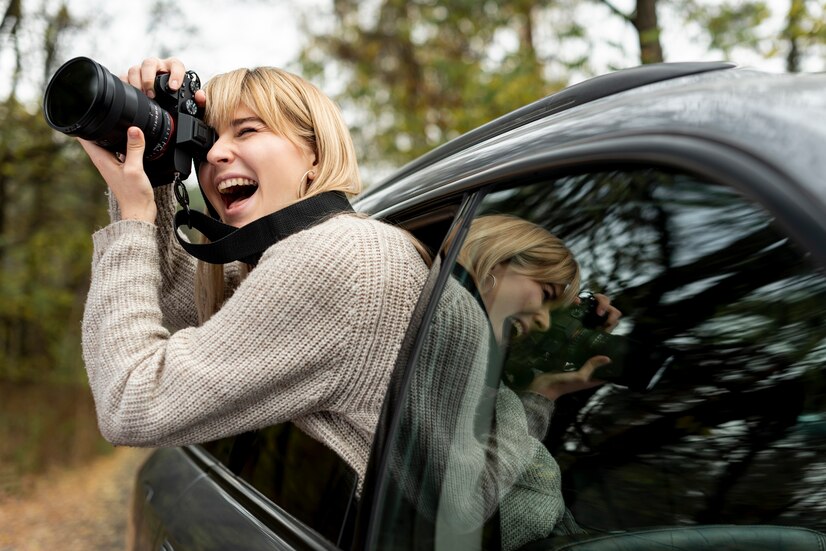Are you making these common mistakes in car photography? Find out what they are and how to avoid them in this informative guide. Don’t let these common mistakes ruin your car photography. Discover the key errors to watch out for and how to fix them in this article
10 Common Mistakes In Car Photography
Neglecting Composition Principles:
Composition is the backbone of any compelling photograph, and car photography is no exception. One of the most common mistakes is neglecting fundamental composition principles such as the rule of thirds, leading lines, and symmetry. To avoid this, take the time to carefully compose your shots, paying attention to the placement of the car within the frame and the surrounding elements. Experiment with different angles and perspectives to find each car’s most visually appealing composition.

Poor Lighting Choices:
Lighting plays a crucial role in photography, and it can make or break a car photo. One common mistake is using harsh, direct sunlight that creates harsh shadows and blown-out highlights. Instead, aim to shoot during the golden hours around sunrise and sunset when the light is softer and more flattering. Alternatively, consider using diffusers, reflectors, or artificial lighting to control and manipulate the light for a more dynamic look.
Overexposure or Underexposure:
Exposure is critical in car photography, as it determines the overall brightness and contrast of your images. One common mistake is overexposing or underexposing the image, resulting in loss of detail in the highlights or shadows. To avoid this, use your camera’s exposure meter to ensure proper exposure or bracket your shots to capture a range of exposures and blend them together in post-processing.
Cluttered Backgrounds:
A cluttered or distracting background can detract from the main subject of your photo – the car. Avoid this common mistake by carefully selecting your shooting location and paying attention to the background elements in your frame. Look for clean, uncluttered backgrounds that complement the car’s aesthetics and help it stand out. Consider using a wide aperture to blur the background and draw focus to the car.
Ignoring Detail Shots:
While capturing the overall beauty of a car is important, don’t forget also to highlight its unique details and features. Neglecting detail shots is a common mistake that can result in a lack of visual interest in your images. Take the time to zoom in on specific details such as the emblem, headlights, or interior upholstery to showcase the craftsmanship and design of the car.
Incorrect Depth of Field:
Depth of field refers to the range of distances in a scene that appear acceptably sharp in an image. One common mistake is using too shallow or too deep depth of field, resulting in blurry or distracting backgrounds. To avoid this, carefully choose your aperture settings to achieve the desired depth of field for each shot. Consider using aperture priority mode or manual mode to have full control over your camera settings.
Inconsistent White Balance:
White balance is crucial for achieving accurate and natural-looking colors in your car photos. One common mistake is neglecting to adjust the white balance settings or relying on auto white balance, which can result in inconsistent colors across your images. To avoid this, manually set the white balance based on the lighting conditions at the time of shooting or adjust it during post-processing to achieve the desired color temperature.

Lack of Planning:
Rushing into a car photo shoot without proper planning can lead to missed opportunities and subpar results. One common mistake is failing to scout locations, consider lighting conditions, or prepare your gear in advance. To avoid this, take the time to plan your shoot thoroughly, including researching potential locations, checking the weather forecast, and creating a shot list to ensure you capture all the shots you need.
Ignoring the Surroundings:
While the car is the main subject of your photo, the surrounding environment can greatly enhance the overall composition and storytelling. One common mistake is ignoring the surroundings or failing to incorporate them effectively into the frame. To avoid this, pay attention to the location and context in which you’re shooting, and consider how the surroundings can complement or contrast with the car to create visually compelling images.
Skipping Post-Processing:
Post-processing is an essential part of the car photography workflow, allowing you to fine-tune your images and bring out their full potential. One common mistake is skipping or neglecting post-processing altogether, resulting in images that lack polish or refinement. To avoid this, invest time in learning post-processing techniques and tools such as Adobe Lightroom or Photoshop to enhance your car photos and make them truly shine.
What are the best adjustments for car photography?
here are some common adjustments that can help enhance car photos:

Exposure:
Ensure proper exposure to maintain detail in both highlights and shadows. Use exposure compensation or manual exposure settings to adjust exposure as needed.
Contrast:
Adjust contrast to add depth and definition to the image. Increase contrast slightly to make the car stand out, but avoid overdoing it to prevent loss of detail.
Color Temperature:
Fine-tune color temperature to achieve accurate and natural-looking colors. Adjust white balance settings to correct any color casts caused by different lighting conditions.
Saturation and Vibrance:
Enhance colors by adjusting saturation and vibrance. Increase saturation to make colors more vibrant, but be careful not to oversaturate the image. Vibrance adjustments can help boost colors without affecting skin tones.
Clarity:
Use clarity adjustments to enhance mid-tone contrast and add crispness to the image. Be subtle with clarity adjustments to avoid introducing unwanted artifacts or halos.
Sharpening:
Apply sharpening selectively to enhance detail and texture in the car. Use masking to limit sharpening to areas with sufficient detail, such as the car’s body panels or trim.
Noise Reduction:
Reduce noise in the image, especially in areas of shadow or low light. Adjust noise reduction settings to balance noise reduction with preservation of detail.
Lens Corrections:
Correct lens distortions, such as barrel distortion or vignetting, to ensure straight lines and even illumination across the frame. Use lens correction profiles or manual adjustments as needed.
Cropping and Straightening:
Crop the image to remove distracting elements and improve composition. Straighten the horizon or adjust the perspective to correct any tilting or distortion.
Selective Editing:
Use selective editing tools such as adjustment brushes or graduated filters to target specific areas of the image. This allows for fine-tuning of exposure, color, and other adjustments without affecting the entire image.
Why are Essential Common Mistakes in Car Photography?
Recognizing and understanding common mistakes in car photography is essential for several reasons:
Improving Skills:
Identifying common mistakes allows photographers to recognize areas where they may need improvement. By understanding these mistakes, photographers can actively work to enhance their skills and produce higher-quality images.
Achieving Consistency:
Consistency is key in any form of photography. By understanding common mistakes, photographers can develop techniques to avoid them, resulting in more consistent and professional-looking images over time.
Enhancing Creativity:
Understanding common mistakes provides photographers with the opportunity to think creatively and experiment with different approaches to avoid them. This can lead to the development of unique and innovative photography techniques.
Maintaining Professionalism:
In the competitive field of car photography, professionalism is essential for success. By avoiding common mistakes, photographers can demonstrate their expertise and attention to detail, enhancing their reputation and credibility in the industry.
Maximizing Impact:
Effective car photography captures the attention of viewers and highlights the unique features and qualities of each vehicle. By avoiding common mistakes, photographers can create images that maximize visual impact and effectively convey the beauty and personality of the cars they photograph.
Client Satisfaction:
For photographers working with clients in the automotive industry, avoiding common mistakes is crucial for meeting client expectations and delivering high-quality results. By producing images that are free from common errors, photographers can satisfy clients and build long-term relationships based on trust and reliability.
How do you take the perfect picture of a car?
Taking the perfect picture of a car involves careful planning, attention to detail, and the application of photography techniques tailored to automotive subjects. Here’s a step-by-step guide to help you capture stunning car photographs:
Select the Right Location:
Choose a location that complements the car’s style and personality. Look for scenic spots, urban environments, or open roads that enhance the visual appeal of the car.
Consider Lighting Conditions:
Aim to shoot during the golden hours around sunrise or sunset when the light is soft and warm. Alternatively, overcast days or shaded areas can provide diffuse lighting that minimizes harsh shadows and highlights.
Clean the Car:
Ensure the car is clean and free from dirt, dust, and water spots. A well-maintained car will look more appealing in photographs and reflect light more evenly.
Compose the Shot:
Pay attention to composition principles such as the rule of thirds, leading lines, and symmetry. Experiment with different angles, perspectives, and framing to find the most visually compelling composition for the car.
Control Depth of Field:
Choose an appropriate aperture to control depth of field. Use a wide aperture (low f-stop) to blur the background and draw focus to the car, or a narrow aperture (high f-stop) to keep more of the scene in focus.
Adjust Camera Settings:
Use manual mode or aperture priority mode to control exposure settings. Adjust shutter speed, aperture, and ISO to achieve proper exposure while maintaining image sharpness and clarity.
Focus on Details:
Capture close-up shots of the car’s unique features and design elements. Highlight distinctive details such as the grille, headlights, wheels, and interior upholstery to showcase the craftsmanship and style of the car
FAQ about Common Mistakes In Car Photography
Q: How can I improve my car photography skills?
A: Improving car photography skills involves recognizing and addressing common mistakes, practicing composition techniques, mastering lighting control, understanding exposure settings, paying attention to detail, experimenting with depth of field, refining white balance adjustments, planning photo shoots thoroughly, incorporating surroundings creatively, and learning post-processing techniques.
Q: Why is composition important in car photography?
A: Composition is essential in car photography because it determines the overall balance, visual appeal, and storytelling of the image. Proper composition techniques help to create dynamic and engaging photographs that effectively showcase the beauty and personality of the car.
Q: What role does lighting play in car photography?
A: Lighting plays a crucial role in car photography as it affects the appearance, mood, and quality of the image. Proper lighting control can enhance the car’s features, highlight its unique design elements, and create depth and dimension in the photograph.
Q: How can I avoid overexposure or underexposure in car photography?
A: To avoid overexposure or underexposure in car photography, use your camera’s exposure meter to gauge the correct exposure settings, adjust aperture, shutter speed, and ISO accordingly, bracket your shots to capture a range of exposures, and be mindful of the lighting conditions when shooting.
Q: What should I consider when choosing a background for car photography?
A: When choosing a background for car photography, consider selecting a clean, uncluttered backdrop that complements the car’s aesthetics and helps it stand out. Avoid distracting elements that could detract from the main subject and consider using shallow depth of field to blur the background and draw focus to the car.
Q: Why is post-processing important in car photography?
A: Post-processing is important in car photography because it allows photographers to fine-tune their images, correct any imperfections, and enhance the overall quality and visual appeal. Techniques such as color correction, exposure adjustment, and retouching can help create polished and professional-looking car photographs.
Q: How can I avoid common mistakes when planning a car photo shoot?
A: To avoid common mistakes when planning a car photo shoot, thoroughly research potential locations, consider lighting conditions, prepare your equipment in advance, create a shot list or mood board, and communicate effectively with any clients or collaborators involved in the shoot.
Conclusion:
Car photography is a challenging yet rewarding genre that requires a combination of technical skill, artistic vision, and meticulous attention to detail. By avoiding common mistakes such as neglecting composition principles, poor lighting choices, overexposure or underexposure, cluttered backgrounds, ignoring detail shots, incorrect depth of field, inconsistent white balance, lack of planning, ignoring the surroundings, and skipping post-processing, you can elevate your car photography game and capture stunning images that showcase the beauty and personality of each vehicle. With practice, patience, and perseverance, you can hone your skills and create memorable car photos that leave a lasting impression on viewers

